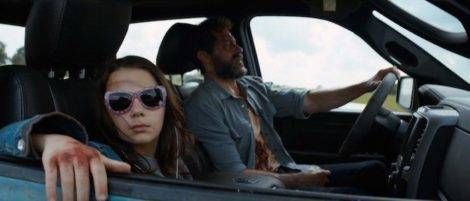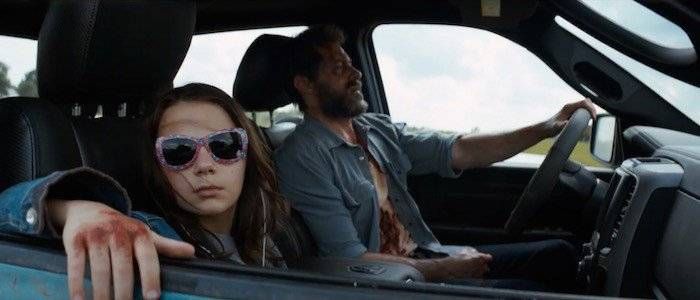
Someone Will Come Along: Rogue One, Logan, and Hope
There are times when you can look back at the films released during a certain period and identify common themes. Though made by different creators at different studios, they speak to the zeitgeist of the day, a shared cultural context bleeding through across differing plots and genres: the defiant 30s, the anxious 50s, the disaffected 70s.
And sometimes you can do it right when the movies come out. That’s how I felt about Rogue One, released last December, and Logan, released a couple weeks ago.
[SPOILERS FOR BOTH MOVIES AHEAD; SERIOUSLY, I’M NOT KIDDING]
They’re not all that dissimilar on the face of it. Both fall under the larger umbrella of science fiction, though one is space opera and the other a superhero movie set in a near-future dystopia. Both are the latest installments of massive multimedia franchises, guaranteed to make money hand over fist at the box office. And both are tragedies.
It’s that last bit that interests me, because you generally don’t expect big budget action movies to require a travel pack of tissues and some waterproof mascara to get through them. But the entire main cast of Rogue One ends up dead by the end – not too surprising, since we know what happens immediately after its events, but still devastating to watch. And Logan sees the death of two beloved cornerstone characters of the X-Men franchise, Wolverine and Professor X, after an astonishing 17 years of performances from Hugh Jackman and Sir Patrick Stewart.
Both movies also speak to the current political situation in a way that’s particularly striking because they are responding to what was subtext at the time that they were written and filmed, but which has now become text. Rogue One is very much about, as Riz Ahmed put it, “waking up to the real political situation of your time and accepting you can’t sleepwalk into the future because there won’t be one,” and how a small, pyrrhic victory can lead to change further down the line. In a time when many of us are wondering how we can possibly fight what feels like an overwhelming rising tide of hateful ideology, Rogue One felt extraordinarily resonant in a way it probably wouldn’t have if Hillary had won.
Meanwhile Logan links the persecution of a metaphorical minority group (mutants) with that of real minorities and other oppressed groups, which is nice to see from a franchise that too often filters its stories of bigotry through a lens of “isn’t life tough for these beautiful white teenagers with superpowers.” It’s the story of two elderly, disabled men with poor healthcare sneaking a biracial refugee girl north past the Mexican and Canadian border on a journey that recalls the Underground Railroad. It’s no accident that that description includes about five or six demographics targeted by the current administration, or that all three protagonists are immigrants. And again, it resonates differently in this, the darkest timeline – especially in moments like when we see leaked footage of bloody hospital beds where teenage girls died in childbirth, or when Logan drives, dead-eyed, past the fence along the Mexican border while drunken frat boys scream “USA! USA!” out of the sunroof. (Admittedly the Mexican representation could be better – it doesn’t really extend past “impoverished victims with Americans running roughshod over them,” for the most part.)
Both movies are about wounded, jaded characters dying in service to their cause. Logan in particular is bleak without respite, as characters drop like flies in a sea of gore.
And yet neither movie is without hope. In fact, that’s the ironic theme of Rogue One, as the characters repeatedly say: “Rebellions are built on hope.” Hope is the last word spoken in the movie, by Princess Leia no less, who is of course famous for her iconic plea: “Help me, Obi-Wan Kenobi. You’re my only hope.”
In Logan, Laura represents the hope for mutant future, as evidenced by Charles’s utter joy at discovering a young mutant in this new generation. Though Logan and Charles both die on the road, Laura does make it to Canada – and not alone, but with a diverse group of young mutants whose powers, genetic gifts from their vanished predecessors, evoke themes of legacy and continuation.
Both films are dark. But both end with hope – and both embody that hope in a young woman. Because despite Leia’s plea to Obi-Wan, he dies halfway through A New Hope (there’s that word again), and it’s Leia who Yoda identifies as the galaxy’s last hope in Empire, Leia who is still leading the fight in The Force Awakens when the men she loves are gone. And it’s Laura who’s left standing to carry on for all mutantkind – a nonwhite immigrant girl.
I’m not trying to claim that the science fiction movies of today are an unswervingly feminist manifesto – for starters, it’s worth acknowledging that as much as our culture may love spunky young girls, it’s less kindly disposed towards, say, older women with ambition and experience. And both movies have only one or two significant female characters surrounded by a sea of men. But it means something to me to see these franchises using girls to represent hope. It gives me something to smile about while I’m wiping tears from my cheeks and saying “I can’t believe they even killed the robot.”
So here’s to hope, and the young girls, real and fictional, that will carry it forward in the stories that mean the most to us. May the Force be with them.












